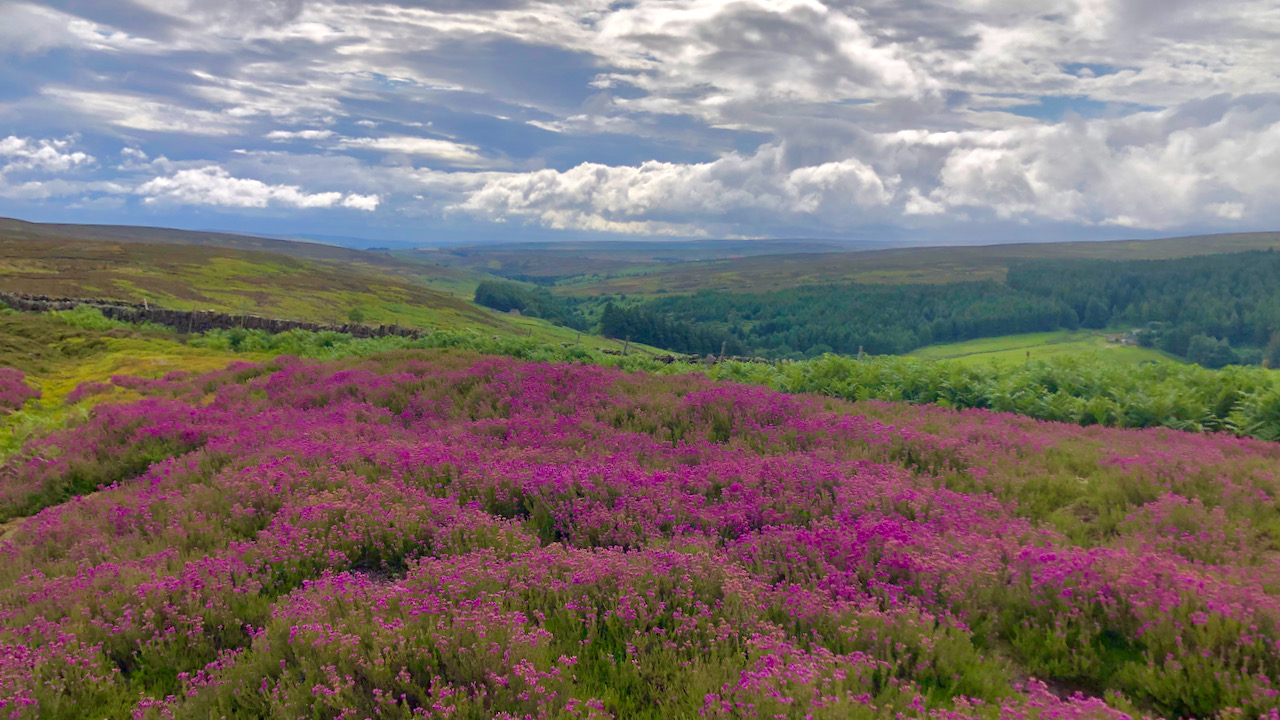Bell heather is my most favourite of the heathers. I love thee richness of its purple hue, and unlike the more prevalent and lilac-coloured ling, which The North York Moors is renowned for, bell heather boasts an extended display. It blooms earlier in June and lingers longer, often extending into September. The National Park proudly boasts the largest continuous expanse of heather moorland in England and Wales, and this swathe on Warren Moor, overlooking Baysdale.
Adding to this heather assemblage is the cross-leaved heath, completing the triumvirate. In addition, there is another type of heather, St Dabeoc’s Heath (Daboecia cantabrica), in at least one location on the North York Moors, although it is more commonly associated with the western regions of Ireland1North. 2016. ‘A to Z: A Horde of Hs’, The Official Blog for the North York Moors National Park (The official blog for the North York Moors National Park) <https://northyorkmoorsnationalpark.wordpress.com/2016/07/12/a-to-z-a-horde-of-hs/#:~:text=The%20North%20York%20Moors%20is%20renowned%20for%20its%20heather> [accessed 12 July 2023].
It may seem an aporia, but the North York Moors, despite their reputation, are relatively dry and well-drained. Bell heather thrives in the more well-drained areas of these moorland habitats. While they possess peat soils, there is typically a shallow layer of peat before reaching the mineral soil, which has an acidic nature. Most heather moorlands are subjected to grazing and regular burning, often carried out by gamekeepers aiming to prevent the encroachment of scrub and trees. This practice creates a diverse mosaic of heather at different stages of growth, providing food and nesting cover for game birds such as grouse. Bell heather and ling, being adapted to acidic soils and burning, require the exposure to smoke for their seeds to germinate—an intriguing fact that astonishes me, as it is rarely mentioned as a justification for the periodic burning of grouse moors2“More than just a bog: an educational resource for A and AS Level Geography and Higher Geography and Biology.” 2013. Originally prepared by: Jenny Townsend (Independent Educational Consultant) and Professor Mark Reed (Birmingham City University) for www.sustainableuplands.org (site no longer valid). (Edit: see comments below).
In the Scots dialect, bell heather is affectionately known as Carlin-heather3Etymological Dictionary of the Scottish Language, 1818..
- 1North. 2016. ‘A to Z: A Horde of Hs’, The Official Blog for the North York Moors National Park (The official blog for the North York Moors National Park) <https://northyorkmoorsnationalpark.wordpress.com/2016/07/12/a-to-z-a-horde-of-hs/#:~:text=The%20North%20York%20Moors%20is%20renowned%20for%20its%20heather> [accessed 12 July 2023]
- 2“More than just a bog: an educational resource for A and AS Level Geography and Higher Geography and Biology.” 2013. Originally prepared by: Jenny Townsend (Independent Educational Consultant) and Professor Mark Reed (Birmingham City University) for www.sustainableuplands.org (site no longer valid)
- 3Etymological Dictionary of the Scottish Language, 1818.

Leave a Reply